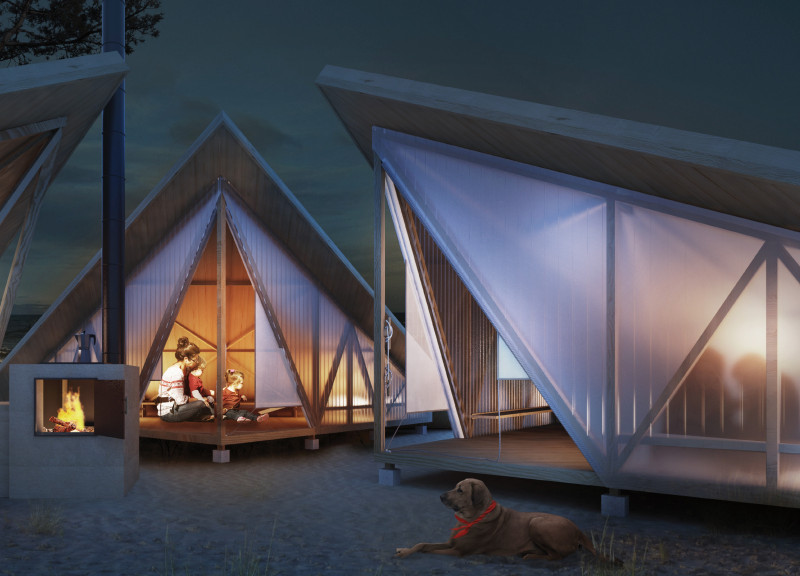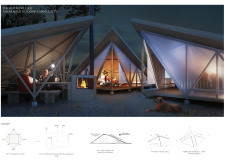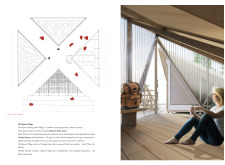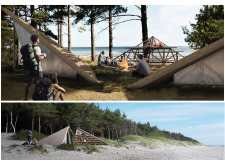5 key facts about this project
The primary function of the Repose Village is to serve as a contemporary camping retreat that encourages guests to engage with the environment in a meaningful way. The village consists of four types of cabins, each of which is associated with one of the natural elements. The Earth module is dedicated to sleeping accommodations, providing a comfortable resting space for occupants. The Water module encompasses essential amenities, such as a sauna and shared toilet facilities, enhancing the livability of the cabins. The Fire module serves as the community kitchen and gathering area, fostering interaction among visitors. Finally, the Air module is designed as a recreational space for relaxation and play, inviting guests to unwind in the tranquil surroundings.
In terms of design, the cabins feature a distinct triangular form that mirrors natural shapes found in the landscape, such as sand dunes. This choice not only aids in aesthetic appeal but also contributes to functional aspects like rainwater drainage. The strategy of utilizing pitched roofs allows for efficient water runoff and enhances the visual connection to the natural environment. The cabins are modular in nature, offering flexibility in their layout, which can easily adapt to accommodate varying numbers of guests or configurations.
Materiality plays a crucial role in the architectural expression of the Repose Village. Timber is predominantly used throughout the structure, providing warmth and a connection to the natural world while ensuring sustainable practices. Polycarbonate walls allow for transparency and lightness, enabling natural light to create inviting interiors while also promoting energy efficiency. Concrete is strategically applied in outdoor features, such as the communal fire pits, providing durability and functionality.
The project’s spatial organization promotes not just individual solitude but also community engagement through shared spaces. The layout encourages social interaction with open-air communal areas, allowing guests to gather around fire pits or other common facilities. This careful positioning fosters a sense of community among visitors while still offering opportunities for personal retreat within each cabin.
What makes the Repose Village noteworthy is its integration of architectural design with a focus on nature and sustainability. By using elements that draw inspiration from the environment, this project not only respects the landscape but also enhances the overall experience of staying in a natural setting. The design invites guests to immerse themselves fully in their surroundings, creating a balanced relationship between architecture and the landscape.
Overall, the Repose Village exemplifies a thoughtful approach to architectural design, reflecting an understanding of the importance of connecting people with nature. By exploring elements such as architectural plans, architectural sections, and architectural designs, readers can gain deeper insights into this project’s thoughtful execution and the mature ideas it represents. Those interested in understanding how architecture can facilitate a harmonious relationship with nature are encouraged to delve into the project's presentation for a more comprehensive view.


























